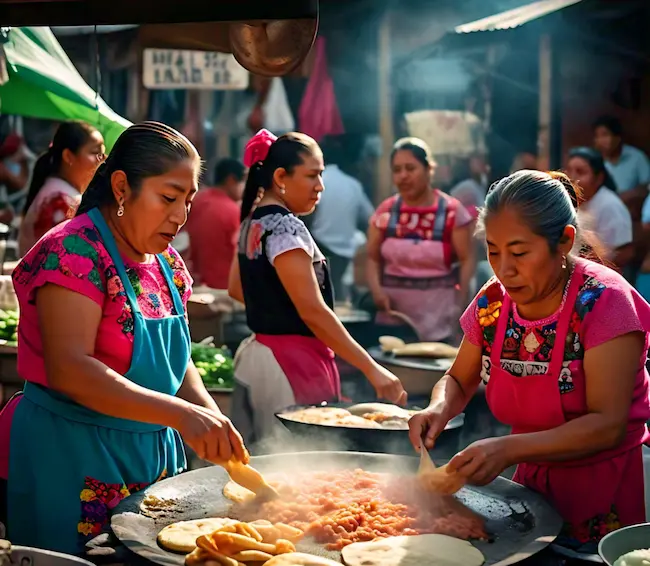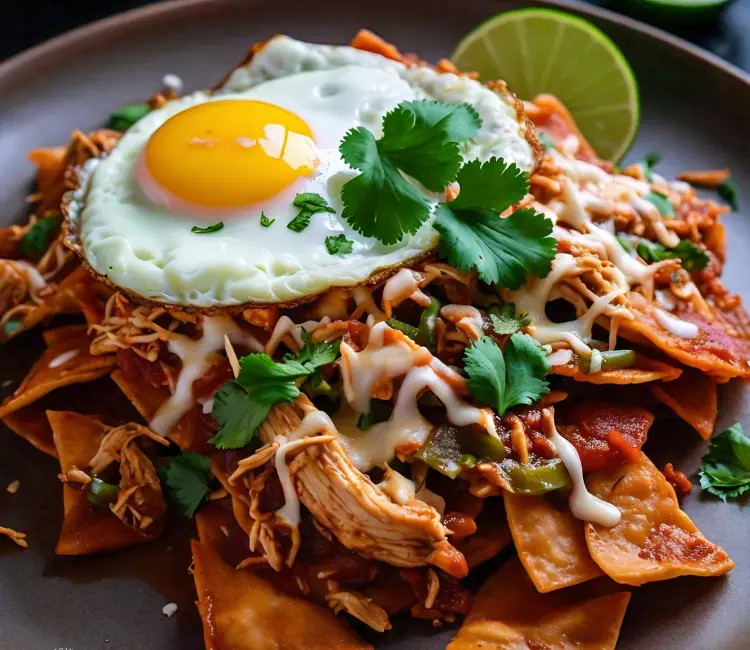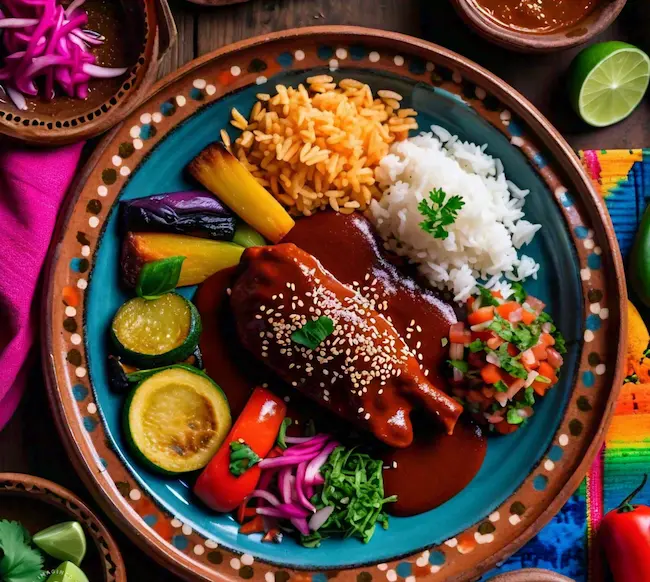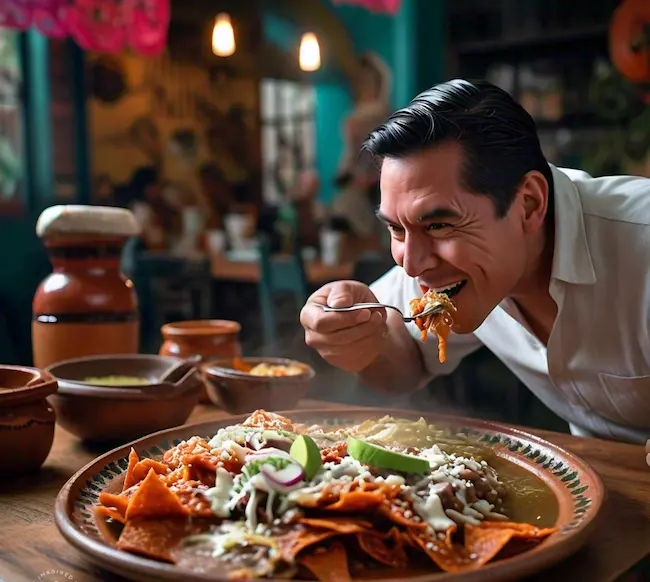Chilaquiles are more than just a breakfast dish in Mexico; they celebrate tradition, flavour, and the comforting simplicity of home-cooked food. For many, it’s the ultimate comfort food that brings back memories of Sunday mornings with family, the smell of freshly fried tortillas, and the sound of salsa sizzling in the pan. But what exactly makes celebrate chilaquiles so unique, and why has it become a symbol of Mexican culinary pride? Let’s dive into this beloved dish’s history, variations, and cultural significance.
The Origins of Celebrating Chilaquiles: A Dish Steeped in Tradition

Chilaquiles’ roots are in ancient Mesoamerican cuisine, where maize (corn) was a staple food. “chilaquiles” is derived from the Nahuatl language, meaning “chilis and greens.” Historically, chilaquiles were a way to use leftover tortillas, a practice that continues today. The tortillas were fried until crispy, then simmered in salsa to soften slightly, creating a delightful contrast of textures.
This dish is believed to have been popular among the Aztecs, who valued the nutritious combination of maize, chilli, and other local ingredients. Over time, chilaquiles evolved, incorporating various regional flavours and ingredients, making them a versatile and beloved dish across Mexico.
The Anatomy of Celebrating Chilaquiles: A Symphony of Flavors and Textures

At its core, chilaquiles consists of three main components: tortillas, salsa, and toppings. Each element is crucial in creating the dish’s unique flavour profile and texture.
- Tortillas: The foundation of chilaquiles, tortillas are traditionally made from maize and are either fried or baked until crispy. The choice of tortilla—corn or flour—can vary depending on regional preferences, but corn tortillas are the most common and authentic choice.
- Salsa: The soul of the dish, salsa, can be red (salsa roja) or green (salsa verde), depending on the type of chilli peppers used. The salsa gives chilaquiles its signature flavour, with the tanginess of tomatoes, the heat of chilli peppers, and the freshness of cilantro. In some variations, mole, a rich, chocolatey sauce, is used instead of salsa, adding a deep, complex flavour.
- Toppings: Chilaquiles are often garnished with various toppings, including crumbled queso fresco, crema (Mexican sour cream), sliced onions, avocado, and fresh cilantro. Shredded chicken, fried eggs, or chorizo can be added for added protein. Each topping adds a different layer of flavour and texture, making every bite of chilaquiles a unique experience.
Regional Variations: A Dish as Diverse as Mexico Itself

Celebrating Chilaquiles are enjoyed across Mexico, but like many traditional dishes, they vary significantly from region to region. Here’s a look at some of the most popular variations:
- Chilaquiles Verdes (Green Chilaquiles): This variation uses salsa verde, made from tomatillos, green chili peppers, and cilantro. It’s trendy in the central and southern regions of Mexico.
- Chilaquiles Rojos (Red Chilaquiles): This variation is commonly found in the northern parts of Mexico. It is made with salsa roja, which includes tomatoes and red chilli peppers.
- Chilaquiles with Mole: In Oaxaca and Puebla, mole is used instead of salsa, creating a more decadent, complex dish. The mole’s combination of chocolate, spices, and chilli adds depth to the chilaquiles, making it a hearty and satisfying meal.
- Chilaquiles Norteños: In the northern states, chilaquiles are often topped with carne asada or grilled steak, adding a smoky, savoury element.
- Chilaquiles Sinaloenses: In Sinaloa, chilaquiles are typically served with a rich tomato sauce, shredded chicken, and a generous helping of cheese.
Each region’s take on chilaquiles offers a unique insight into the local ingredients and culinary traditions, making it a dish as diverse as the country.
The Cultural Significance of Chilaquiles: A Dish That Brings People Together

In Mexico, Celebrating Chilaquiles are more than just food—they’re a way to bring people together. Whether served at a bustling market, a roadside diner, or at home with family, chilaquiles are a dish that’s meant to be shared. They’re often enjoyed as a communal meal, with everyone digging into a large, family-style platter.
Chilaquiles are also famous for La Cruda, the infamous Mexican hangover cure. The combination of carbs, spice, and protein is said to help alleviate the symptoms of a long night of celebration, making it a staple of Mexican breakfast culture.
Moreover, chilaquiles are a symbol of resourcefulness and sustainability. The dish was originally created to use up stale tortillas, demonstrating the Mexican tradition of wasting nothing and turning simple ingredients into something delicious.
Celebrating Chilaquiles Around the World

While Celebrating Chilaquiles are a traditional Mexican dish, they have gained popularity internationally, particularly in the United States, where they are often featured on brunch menus. The dish’s adaptability and comforting flavours have made it a favourite among food enthusiasts, who appreciate its balance of simplicity and depth.
Many Mexican restaurants in the U.S. offer Celebrating Chilaquiles with their twist, incorporating local ingredients or serving the dish with a side of refried beans or rice. In some places, you might even find chilaquiles topped with unexpected ingredients like pulled pork, smoked salmon, or even tofu, reflecting the dish’s versatility and global appeal.
How to Make Authentic Chilaquiles at Home: A Simple Recipe

Making Celebrating Chilaquiles at home is surprisingly easy, and it’s a great way to experience the flavours of Mexico in your kitchen. Here’s a simple recipe to get you started:
Ingredients:
- 12 corn tortillas cut into wedges
- 1 cup vegetable oil (for frying)
- 2 cups salsa (red or green)
- 1/2 cup crumbled queso fresco
- 1/2 cup crema
- 1/4 cup thinly sliced red onion
- One avocado, sliced
- Fresh cilantro for garnish
- Two eggs (optional)
- Shredded chicken or beef (optional)
Instructions:
- Heat the vegetable oil in a large skillet over medium heat. Fry the tortilla wedges in batches until crispy and golden brown. Remove and drain on paper towels.
- In the same skillet, reduce the heat to low and add the salsa. Simmer for 2-3 minutes until heated through.
- Add the fried tortillas to the skillet and toss gently to coat them in the salsa. Cook for another 2 minutes, just until the tortillas begin to soften but still retain some crunch.
- Serve the chilaquiles hot, topped with queso fresco, crema, red onion, avocado slices, and fresh cilantro. Add fried eggs or shredded meat for extra protein if desired.
- Enjoy your chilaquiles with refried beans or a fresh salad for a complete meal.
Conclusion: Embracing the Spirit of Chilaquiles
Celebrating Chilaquiles are more than just a dish; they celebrate Mexican culture, history, and the joys of simple, home-cooked food. Whether enjoying them in a bustling Mexican market or making them in your kitchen, chilaquiles offer a delicious taste of Mexico’s rich culinary heritage. So next time you’re looking for a dish that’s comforting, flavorful, and full of tradition, celebrate chilaquiles and experience the magic of this beloved Mexican classic.
This blog post provides a more comprehensive and engaging exploration of the dish than other resources by focusing on its rich history, regional variations, and cultural significance. With its easy-to-follow recipe, readers are encouraged to learn about chilaquiles and celebrate and enjoy them in their homes, bringing the spirit of Mexico to their tables.
Read more on Cp24.
